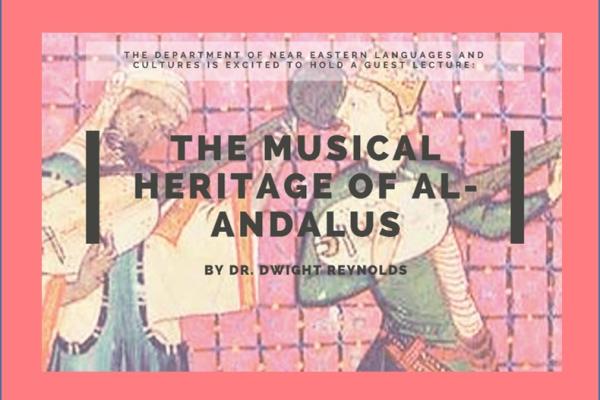The Musical Heritage of al-Andalus, Oct 28th

The Department of Near Eastern Languages and Cultures is excited to welcome Dr. Dwight Reynolds to campus for a guest lecture, The Musical Heritage of al-Andalus
Lecture Description:
Medieval Muslim Spain left a rich cultural heritage in agriculture, art, architecture, gardening, medicine, mysticism, philosophy, poetry, the physical sciences, urban planning, and other realms, but the most enduring contribution of that society may be in the field of music. Al-Andalus was a point of cultural contact and exchange around the Mediterranean that had a profound impact on medieval music in Europe as well as in the Arabo-Islamic World. Through this network of exchange, for example, the rebec (Ar. rabāb), from which the later bowed string instruments such as the viol family developed, and the Arab lute (Ar. al-‘ūd) were introduced to Europe. In addition, a new strophic song-form emerged, the muwashshaḥ / zajal, then spread rapidly across the Arabic-speaking Middle East, and has remained in continuous performance for nearly a thousand years from Morocco in the West, to Syria and Iraq in the North, to Yemen in the South. This song-form also became one of the major vehicles for Sephardic Jewish music in the form of piyyutim and bakkashot, in which even today, medieval poems composed by the great Andalusian Jewish poets are sung to the same melodies as Muslim and Christian Arabs sing their texts.
Medieval Muslim Spain left a rich cultural heritage, but the most enduring contribution of that society may be in the field of music. This presentation explores musical life in al-Andalus as a point of cultural contact and exchange around the Mediterranean that had a profound impact on medieval music in Europe as well as in the Jewish, Christian, and Muslim communities of the Arabic-speaking Middle East.
